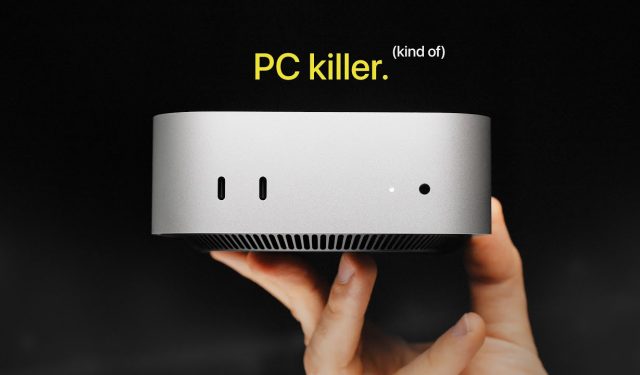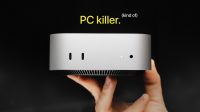In a recent analysis of the new Apple M4 Mac Mini, the spotlight is cast on the remarkable performance of Apple’s latest chip, which surprises many by outpacing the offerings from both AMD and Intel. This article delves into the various aspects of the M4 Mac Mini, including its design, performance benchmarks, and practicality for everyday tasks, particularly in creative workflows. The discussion is crucial for tech enthusiasts and potential buyers, especially amid fierce competition in the CPU arena.
Exceptional Single-Thread Performance
The M4 chip demonstrates extraordinary single-threaded performance in benchmarks, significantly surpassing the latest CPUs from AMD and Intel by an impressive 25%. This advantage is of particular importance for professionals in design and engineering fields, where many applications require high performance from single CPU cores. For instance, while using Autodesk Fusion 360, which is a heavily relied-on 3D modeling application, the new Mac Mini completes demanding tasks faster than many competitors, making it a viable option for professionals who depend on efficient processing.
This single-thread dominance is essential when dealing with complex operations, such as 3D scans or simulations, where processing speed can dramatically impact productivity. Users managing large files or detailed scans will appreciate the time saved in tasks typically stretched over multiple hardware configurations. The ability of the M4 chip to handle demanding applications with ease cements its place as a work-ready machine, challenging the predominance of more traditional powerhouses in the market.
Compact Design and Portability
The compact form factor of the Mac Mini remains a standout feature. Roughly the same size as an AMD Ryzen CPU box, it is incredibly portable yet packed with sophisticated technology. The device boasts an impressive 0.8 liters in volume, making it easy to set up in small workspaces or move between locations, which is a significant plus for those looking to maintain a mobile office or creative studio. This compactness is complemented by a solid array of I/O options, though some users may find the lack of an SD card slot or USB Type A connections a bit limiting compared to larger models like the Mac Studio.
Affordably priced at $600, the base model includes a 10-core CPU and GPU alongside 16 GB of shared memory, making it a relatively cost-effective solution for users who require a reliable workstation without breaking the bank. However, the configuration process can quickly escalate in price, particularly for users needing additional internal storage or memory. As such, it is advisable to consider external solutions like SSDs, which offer a budget-friendly approach to expanding storage capacity, especially given Apple’s tendency to limit onboard storage in lower-spec models.
Performance in Creative Workflows
While the M4 Mac Mini excels in several areas, the discussion also highlights its performance limitations, particularly in video editing and heavy animation tasks. Although the device can handle 4K footage remarkably well, it does fall short of achieving the desired frame rate in more demanding scenarios without adjusting playback settings. For a user who frequently edits denoised 4K footage, this may present a challenge, indicating that while the M4 chip is efficient, it does not yet replace high-end PCs designed for videotape-heavy workflows.
More significantly, the forthcoming M4 Ultra chip, anticipated to boast up to eight times the GPU processing power, brings hope for those who require a machine capable of heavier lifting, such as 3D animations and gaming. The Mac Mini currently serves as an excellent entry point for creative professionals, blending performance with affordability but may need an upgrade as project demands grow or become more intensive.
Storage Concerns and Recommendations
One of the major points of criticism concerning the M4 Mac Mini is its storage strategy. At just 256 GB, the internal storage proves insufficient for many users, particularly in demanding workflows where large files are the norm. With a significant push towards iCloud subscriptions by Apple, users may find themselves compelled to purchase expanded storage options sooner than expected. This strategy raises concerns among consumers who favor upfront hardware capabilities and straightforward solutions to storage limitations.
For individuals looking at the M4 Mac Mini as a viable workstation, investing in an external SSD provides a practical workaround. The ability to utilize robust, affordable external storage methods adds flexibility and ease, enabling users to maintain performance while managing extensive data needs without the inflated costs associated with increasing internal specs within Apple’s ecosystem.
Final Thoughts
The Apple M4 Mac Mini represents an impressive advancement in CPU technology, particularly for users who prioritize single-thread performance and a compact design. Despite its limitations in more intensive tasks and the controversial storage strategy, it fits seamlessly into the workspace of many creative professionals. As technology continues to evolve, and with the anticipation of the M4 Ultra chip, one can only wonder how future iterations of Mac systems will further redefine efficiency and productivity in the creative industry. Are you considering making the switch to Apple’s M4 chip, or do you believe traditional setups will continue to reign supreme? Share your thoughts!
https://www.youtube.com/watch?v=uU2ksgXc11U


